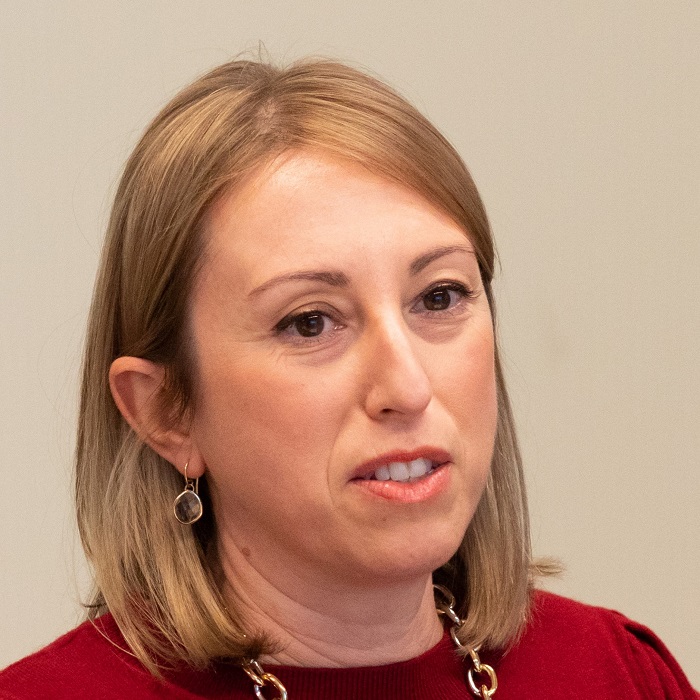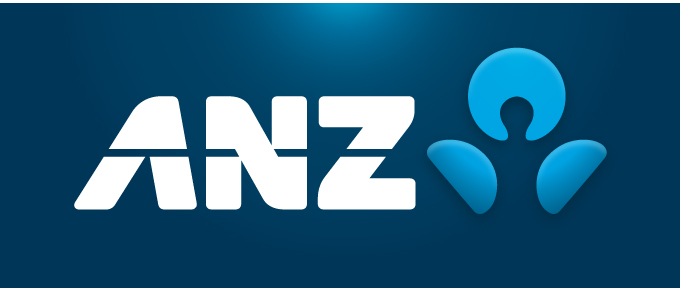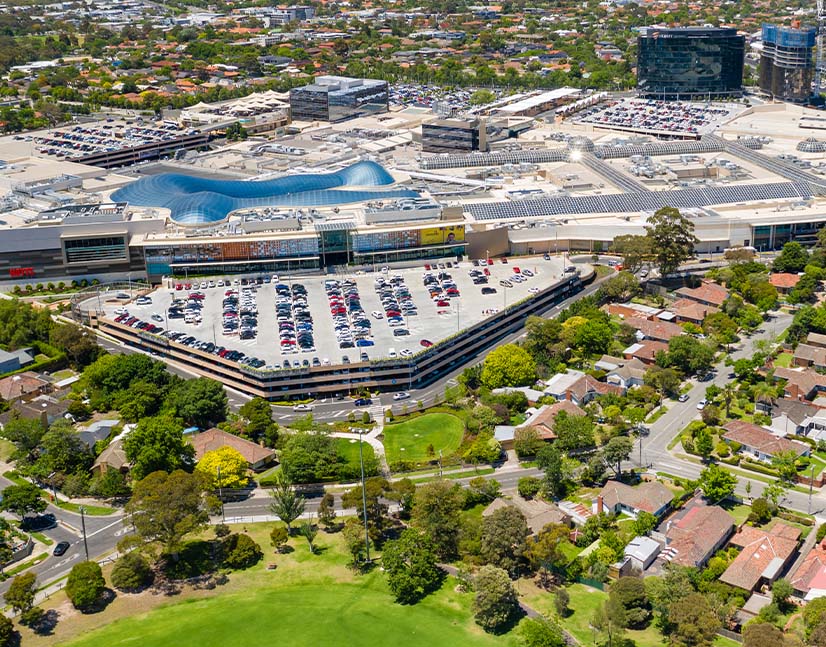
Credit liquidity and primary market signals
In late August, ANZ and KangaNews hosted their third annual bond trading roundtable – this year adding the perspectives of a range of spread product issuers. In a challenging year for credit pricing and liquidity, market users discussed trading conditions, emerging confidence and what secondary activity says about new-issuance prospects.
TRADING IN 2022
Davison How has this challenging year played out in the secondary market?
JAMPALA I think it is first useful to step back and look at the bigger picture. What we are seeing now is very much a new paradigm, where we are almost back to bond markets of the 90s. We have unconstrained markets with volatility not artificially dampened by the collaborative intervention of central banks. It is a real ‘back to the future’, if you will.
As a result, there has been an extraordinary increase in realised volatility in macro markets, particularly rates and FX, and this is permeating through to credit and elsewhere. This is here to stay and not a blip.
The last 10-12 years were a very unusual period in financial markets history and it will take market participants time to get used to the prevailing environment. Recent times have perpetuated a one-way play in various asset classes, including credit. But going forward I think there will be much greater opportunity for two-way activity and profitability. This type of backdrop may be more challenging but, overall, it makes it a very, very exciting time to be an investor, trader and participant.
KULUPPUARACHCHI From a secondary trading perspective, the key theme has been liquidity management. Market makers entered Q1 long risk. Coupled with the lack of dynamic hedging tools available and nonexistent ability to short bonds due to the lack of repo market, this left dealer desks exposed to the exacerbated volatility profile.
In the past, Australian credit has been able to weather selloffs. But the confluence of higher rates and cross-asset volatility has made for a challenging trading environment. When we add macro headwinds from the inflation story we saw one of the worst periods of spread widening since the financial crisis.
Managing liquidity has become a central theme to navigating volatility and sizing to risk has become paramount. In the past, sub five-year and front-end major bank paper has been a safe haven in risk-off periods. What caught many buy- and sell-side market participants off guard was that these once safe areas to weather the storm became the eye of the storm.
Front-end spread widening in banks as short-end yields climbed made for an ugly risk-off environment. Subsequently, we saw liquidity dry up across the board as dealers that had come into the year with larger balance sheets found it harder and harder to consistently provide liquidity to customers.
As Q3 has begun, we have started to see sentiment shift somewhat. With capital markets re-opening we have seen customers re-engage with the Australian credit market. Strong results across banks and corporates have also eased credit concerns and we are starting to see spread compression for the first time this year. However, the underlying liquidity profile is still weak and duration is still difficult to warehouse and move.
Davison How close is the Australian market to having relatively consistent two-way secondary flow?
KULUPPUARACHCHI The Australian credit market has always been a bit ‘feast or famine’ for liquidity and I do not think the profile has dramatically changed. In bank seniors, and at times in tier-two, we see consistent two-way price action. But the velocity of trading is still nowhere in the league of offshore markets such as the US – where bank senior five-year issuance has genuine daily two-way flows.
Again, it comes back to the market structure and not being able to short names. If a buyer wants A$15 million (US$10.7 million) but we only have A$10 million, we cannot go short for the rest. This is a big constraint. US dollar price action has been better because it is possible to support liquidity with shorts.
The other point is that offshore buyers tend to look first at their local market and then at emerging markets in times of stress, so at times Australian credit can be somewhat neglected. For example, even a five-year Telstra bond in US dollars can be difficult to move at the moment. I would say two-way trading is returning slowly but it is really a function of realised volatility.
JAMPALA The repo piece is a very important aspect for two-way trading to proliferate. One of the reasons why dealer inventories have declined substantially in recent times is because there is a much higher rate of settlement failure. It is a global issue, but the repo point exacerbates this in Australasia.
Davison Dealer inventory often comes up, especially as post-financial-crisis capital regulation has reduced dealers’ ability to warehouse risk. How is this affecting the credit market in an environment like this year’s?
KULUPPUARACHCHI Q1 was very difficult and I think most desks across Australia would say they came in too long. The Fed [US Federal Reserve]’s inflation picture was constrained so dealers felt comfortable coming in with larger books.
At this stage, the sharpness of volatility moves is making it more difficult for desks to warehouse risk, especially in duration. If we buy a quality corporate bond we have to be cognisant that we will probably own the paper for 3-6 months even if we get the bond 10-15 basis points back of what we think is a good level. This is where the warehousing aspect comes in and, again, how important managing sizing and liquidity is in the current environment.
The key is to be nimble, so when markets widen we have the opportunity to purchase paper and provide liquidity to customers. This is key focus for ANZ: we want to provide liquidity during moves wider, not just when things are going well.
This is difficult to do when the general flow is typically one way, in other words everyone is either selling or buying. This is the way our market has always been. But, at the same time, if we are nimble and turn over our inventory consistently we can provide consistent liquidity to customers through different cycles. It is a fine balance.
Davison How has what has happened with credit liquidity in Australia through the course of this year compared with global experiences? Would participants in Europe or the US have expected their markets to hold up better than Australia?
KULUPPUARACHCHI The Australian market is usually protected to some extent but given the size of the macro moves it was more brutal this time, at least in some credit sectors. Front-end bank paper in Australian dollars widened by 50-60 basis points.
In the past, US banks and corporates would widen significantly and the Australian dollar market would outperform. Usually the stress is really focused on US dollar Yankee names from Australia, but this time we felt the pain in Australian dollars as well.
Over the last few weeks, as sentiment has shifted, my view is that US dollar paper from Australian issuers is now at greater peril in a risk-off move than Australian dollar paper.
RUSCHPLER It goes without saying that the US dollar, our main funding currency, has been the most liquid for us as anissuer. The depth, number of investors and the bonds we have outstanding creates an advantage compared with the Australian dollar market.
So far this year, the US dollar market has continued functioning and liquidity has been available in size. There is regularly paper available for investors to pick up, simply because of how active we are in the primary space. It is also not unusual to see tickets of US$50-100 million or more get traded.
On a spread basis, it is not unusual for the Australian market to lag the US dollar market – in both directions. When it comes to the global widening trend, Australian dollar spreads for our bonds held comparatively better than the US dollar market. It is no surprise to find an immediate difference in liquidity in a very liquid market, like US dollars, versus Australian dollars or some of the other currencies we operate in that may underline this effect.
Trading banks
The bank market may be leading Australian credit out of the mid-2022 doldrums, with a particular focus on the tier-two asset class. Tier-two is a less liquid and more volatile product but it can also be an accurate guide to risk appetite for credit as a whole.
KULUPPUARACHCHI I think there is a misconception that senior and tier-two liquidity is comparable. Bank senior, across Australian and US dollars, is the most liquid sector of the Australian credit market. It is not uncommon to see as much as US$1 billion of bank senior paper trade in a week. Tier-two liquidity is more in the realm of US$100-200 million a week in stable markets.
What we have seen with the recent wave of tier-two deals is that new issuance has acted as a catalyst for renewed interest in secondary lines among customers. This has created a decent level of activity but at the same time the sizes still pale in comparison with senior bank paper.
Also, dealer inventory is light in tier-two. We have recently seen dealers clear out their inventories on the back of new issuance. Hopefully, corporates will re-enter the debt market in the not-too-distant future and this will provide another catalyst for renewed interest among investors.
SECONDARY-PRIMARY LINK
Davison How has this affected the ability to access primary liquidity in 2022?
RUSCHPLER US dollar levels drifted wider on the back of some volatile swap-spread tightening. Australian dollar levels, relatively speaking, held their ground reasonably well. When we looked at primary market opportunities, a main consideration was the glut of inventory dealers were holding as a result of Asian FX-related selling and the dislocation between broker levels and actual levels traded by dealers.
We consider a number of factors in the Australian market but inventory on dealer books was one of the more important ones over the past few months – because we don’t want to be adding paper to the street when flow is still churning out in the secondary market from investors looking to sell. The bulk of this stock needs to be recycled by dealers first.
Davison Does primary transaction flow typically follow the emergence of positive secondary market conditions in Australia or vice versa?
RAMOS Typically, when we look to bring a primary credit transaction to market we assess secondary trading conditions. When paper is quite light across the street – whether it is a particular part of the curve, capital stack or sector – that is when we feel the market is ready for a new trade.
This conclusion can also be supported by investor reverse enquiry and our discussions with investors on what they are looking for. This is particularly the case when they are looking to get set in good size and cannot source it in secondary. We take all these observations and feedback to formulate a view on the right time to bring a particular borrower to market.
However, for the best part of the month of July we had been observing Australian dollar tier-two secondary spreads continuing to leak out daily, widening by as much as 15-20 basis points over the course of the month. Borrowers are normally less inclined to issue in a widening market.
At the same time as this secondary dynamic was playing out, we were still receiving reverse enquiry, in good size, for a new tier-two transaction from investors. What was happening in secondary was not necessarily reconciling with information we were receiving from investors.
The recent NAB [National Australia Bank] 10-year non-call five-year tier-two [see p16] reinvigorated credit – we really needed that type of trade. A week later, ANZ [Banking Group] followed with its tier-two, which printed an even larger transaction than NAB’s and was also 10 basis points tighter on the back of an even larger final orderbook.
We have also seen – for the first time – jumbo-sized fixed-rate tranches in tier-two deals, which is obviously a function of the rate environment. The NAB and ANZ trades have been performing well in secondary, which is an overall strong result for all involved.
We have also seen increased primary supply from other financial and SSA [supranational, sovereign and agency] issuers, which is encouraging further borrowers in these sectors to monitor the Australian dollar market closely.
The piece of the puzzle that is still missing is a reinvigorated corporate sector. There have been some corporate transactions this year but they have been very few and far between. Volatility has made it very challenging for corporate borrowers to look seriously at the primary market, particularly when bank loan pricing is lagging capital markets. Loans are still proving to be be very attractive and offer duration.
Some companies also have access to the US private placement (USPP) market, which can offer appealing duration that is hard to find here in Australia – even when the market is much stronger.
Davison To what extent does a frequent issuer like ANZ have the luxury of being able to weigh up secondary conditions and dealer inventory, given how much it has to issue over the course of a year?
REID ANZ has had the ability to be more selective in regard to issuance opportunities in recent years, because we have had a smaller funding task. Even coming into COVID-19, we had a noticeably smaller funding task than our peers and generally a little smaller than we had historically. This gave us an ability to be selective, particularly in timing.
We typically look for markets where it is clear that investors want to buy bonds. But we were waiting for this kind of market for domestic tier-two bonds toward the back end of last year and early this year – and it did not come.
On our recent Australian dollar tier-two deal, we had good reverse enquiry from key investors through the ANZ sales desk. This gave us confidence that a trade would work, even prior to the well-received NAB transaction, despite the lack of direction from the secondary market.
This is a very different dynamic from what we have been accustomed to. But it is not that different from offshore markets, including US dollars and euros, which have needed primary liquidity to provide direction to the secondary market.
Davison Pacific National has some offshore bond maturities coming up next year. What is its outlook on funding expectations and needs, and how closely will it look at liquidity and performance when it comes to assessing where to refinance?
BARLIN Next calendar year, Pacific National has A$757 million of bonds maturing – a US$250 million bond in April and then £300 million (US$365.4 million) in September.
I agree that this is a very interesting time. We did some investor work in Europe and Asia in mid-May and we participated in the ANZ debt conference in late June as well. Investors are not looking for duration right now and for us, given we are used to issuing 10-year bonds, this makes funding in the debt capital market a little challenging at present.
This said, ANZ is a great supporter of our paper in the secondary market and it is good to see a bit of trading flow starting to come back. What I would like to know is whether this activity is coming back in particular pockets or sectors, or whether it is across the board.
KULUPPUARACHCHI Financials have led the activity and corporates are slowly starting to see buying interest. Markets are still tenuous and the best way to describe the activity is inconsistent. But it is distinctly better than Q2, across sectors.
Domestically, I think it is further away. If I was asked to move A$10 million of 10-year paper from a generic investment grade corporate now, it might take me a few weeks to a month to find the investors – and they would likely be existing ones.
It is hard to get new buyers into a name at the moment. In the past, when markets were more stable, investors would look at it as a comp versus other names and consider the relative value along with diversification benefits.
RAMOS When we have caught up with investors to talk about their credit view, we are obviously very sympathetic to how much pain they have worn this year. Rate and credit spread moves have been severe in a very short period of time.
We are at an interesting juncture where we are finally experiencing some stability, globally and locally, in the market backdrop. We have had some recent healthy primary flow that has performed. If we continue to see this, I think more investors will start wanting to talk about the corporate pipeline and how we can convince companies planning their funding tasks over the next 12 months to engage in the local market.
Some key Australian asset managers we have recently met have started to open the door to conversations about certain sectors and names they may consider. This allows us to engage in reverse enquiry or feedback that in turn can give a corporate borrower confidence that, if it was to come to market, it will be well received.
We will still need to compare bond pricing versus loans and USPP. But having investors engaged with specific sectors and names is the first indicator that we are moving in the right direction.
KULUPPUARACHCHI There is appetite at five years and shorter, and we are very comfortable owning this tenor on the trading side. John Deere Financial came to market with a three-year deal at swap plus 110 basis points. The first time our desk was able to buy the paper was about four weeks later, at swap plus 95 basis points. Activity is predominately in this part of the curve and duration still has its challenges.
“When the US market turns, as a non-domestic name, we miss out on the rally for the first several weeks while the domestic names tighten. It would therefore be hard to convince us to issue right at this point in time, not only because the outright level is unattractive but also because the relative value looks wrong.”
STIMULATING NEW ISSUANCE
Jampala Reverse enquiry by investors now seems a more palatable way for investors to put risk on their books than the secondary market. Does this point to a desire for investors to extract new-issuance premia? If so, are domestic issuers likely to be more amenable to it in these real, unconstrained markets?
RAMOS It is less about the new-issue concession than it is about investors taking a view on what risk they want to add to their portfolios and being set in size they cannot source in secondary.
Prior to the NAB tier-two trade reinvigorating the Australian dollar credit market, the pipeline across credit – whether it was corporate, financial or SSA – was exceptionally thin, almost nonexistent. We knew cash was building up in the system but secondary activity was minimal and we were hearing from investors that they were keeping their powder dry.
When investors feel they are ready but the primary pipe has not materialised, the only way to de-risk the trade – and, often, to convince the borrower there is a trade to be done – is to have something meaningful from an investor or explore feedback via a mandate announcement. We welcome this type of enquiry and always will, but in the market backdrop we have been dealing with this year it is even more important to get investors engaged in showing their demand.
A new-issue concession may be there but this is more a function of solving for a public deal in benchmark size that is comparable to local or offshore markets depending on the type of deal. It is not the core driver of the reverse enquiry but more a byproduct of it.
REID On reverse enquiry, many domestic investors want to get in deals in size and this is very difficult in the secondary market. We have been open about sharing with investors that if they provide us with reverse enquiry our allocation policy permits a better allocation to these investors when we issue.
Davison The domestic corporate market feels a little like it did a decade ago, in the sense of all these hurdles to cross to convince issuers to bring a deal. Can the reverse enquiry and private placement story help bridge the gap so issuers are not as concerned about benchmark execution?
WILLIAMS It is difficult in the Australian dollar market. We need to fund in fairly large volume to make it worthwhile, and it has always been a struggle to get the Australian dollar market to provide this.
Notwithstanding this, when it comes to setting price Australian investors usually look to the bonds we have outstanding in US dollars or euros and will swap those levels to Australian dollars as the starting point for discussion.
New-issue pricing is always dependent on the secondary market one way or another. For us, this means the US dollar or euro market – and there are some peculiar dynamics that we usually observe in the offshore markets as they become more volatile after an adverse event.
Using the US as an example, we tend to track pretty well with our peer group as spreads widen. But when the US market turns, as a non-domestic name, we miss out on the rally for the first several weeks while domestic names tighten.
This is what we have seen again over the past 3-4 weeks. It would therefore be hard to convince us to issue right at this point in time, not only because the outright level is unattractive but also because the relative value looks wrong.
This dynamic seems to reflect a preference among US domestic investors for local credits during this part of the recovery. Investors want to maximise liquidity and they want SEC [Securities and Exchange Commission]-registered versus, for instance, a 144A Australian real estate issuer, which is a relatively small segment of the market.
Fortunately, we are pretty well funded at the moment – we were quite active in 2020, when we issued US$1.5 billion of senior bonds and US$3 billion of hybrids. We were very liquid then and are still pretty liquid today. However, we are always prepared to be opportunistic – though probably not with the credit spreads we are seeing at the moment.
We prefer 10-year funding or longer in order to match our long-term assets and we can only get this in the debt capital markets. The five-year and limited amount of seven-year bank loans are more for our working capital and liquidity needs.
We have a couple of maturities next year that are covered with existing resources. In general, we are deliberately very liquid because it gives us the flexibility to be opportunistic about when we access funding markets.
“Usually the stress is really focused on US dollar Yankee names from Australia, but this time we felt the pain in Australian dollars as well. Over the last few weeks, as sentiment has shifted, my view is the US dollar paper from Australian issuers is now at greater peril in a risk-off move than Australian dollar paper.”
Davison Demand in Australian dollars clearly has yet to move out on the curve beyond five years, which is less than most true corporate borrowers want. Does this explain the positive environment for bank issuance, as banks are happy to print at 3-5 year tenor?
RAMOS Duration is still a problem in our market. Although it feels like the market is recovering I don’t think everyone is there yet.
The Australian dollar market has been able to offer duration in the past. For example, back in 2017 Asciano broke records with its deal printing the longest and largest 10-year bond at the time, and the market has only added depth and breadth since then. We had roughly A$21 billion in corporate bond issuance last year alone, which was a record year and double what is normal in the sector.
This year, the bank space has been revitalised with major banks coming back and accessing funding in their traditional pre-pandemic style. This is a great tone to set for the market. If we continue to have this kind of stability, hopefully more investors will start to come on board.
Rate hike expectations have also been a showstopper. Now we are starting to work through the hikes, though, we hope investors will start to feel more comfortable and realise that the only way to get corporate exposure is to get comfortable with duration.
From there, we will still have to solve the pricing problem. But we are getting there, step by step. There is still work to do but I hope we will be in a better place by the end of the year, with a stronger corporate pipeline for 2023.
Davison It is interesting that Asian Development Bank has been more active in New Zealand dollars than Australian dollars in 2022. Why is this?
RUSCHPLER It was not by design. We have a funding programme to execute and the Australian and New Zealand dollar markets are strategic aspects of it, that also allow us to diversify our funding sources away from our main, US dollar market.
What worked particularly well for us in New Zealand was a responsive and nimble approach to market conditions and key cornerstone interest.
New Zealand dollars also has a very strong domestic bid. While there has been some offshore participation, it ultimately remains a domestic market and, when we looked at different currencies, we had more comfort on the cornerstone interest at different parts of the curve in New Zealand. Primary levels were also comparable with where the secondary market was trading, and the after-swap levels versus the US dollar curve also made sense.
This contrasts a little with the Australian dollar market, where it has been more challenging to get comfortable that a trade will work in the sense of investor demand, level and even tenor. More price discovery is needed.
Recently, our experience has been that investor interest has worked better toward the short end of the curve. Five years, which has traditionally been the deepest part of the curve, has been a little elusive for SSAs in Australia these past few months – but hopefully not for much longer.
Davison The domestic SSA bid tends to be fairly opportunistic, but it sounds like the relative value opportunity might be starting to emerge. Will domestic money start to view the pickup SSAs offer over semis as worth looking at?
KULUPPUARACHCHI I would say so – and also SSAs are a good place to park money as a defensive play if the world widens after [the Fed conference at] Jackson Hole.
RAMOS We have also seen a significant uptick in Australian dollar liquidity in Asia, particularly out of Singapore- and Hong Kong-based bank balance sheets. This is an interesting dynamic happening in the financial space that we recently discovered is also playing into some of the SSA supply that has come through.
Some of these investors have traditionally only bought financials but have started to come into some of the more recent SSA deals we have done. This is something we are keen to keep an eye on to see if it becomes a trend or if it is just a short-term blip.
Davison Does this relate to outright yield – that SSAs are starting to hit yield bogeys?
RAMOS It is not necessarily a yield bogey hit but rather a view on where investors can get more return for what they have sitting on their balance sheet.
KULUPPUARACHCHI Asian credit has also really struggled this year – it has been worse than during the financial crisis in many respects. As a result, accounts are finding it difficult to invest in investment-grade Chinese names as a safe heaven. This also adds to the allure of SSAs for Asian investors.
ESG bonds and liquidity
The mismatch in supply and demand of bonds with environmental, social and governance (ESG) labels – in the sense of there being far more demand than supply – might be expected to make such bonds perform better but see less turnover. Market participants say there are some clear signs that reality matches this expectation.
KULUPPUARACHCHI We are starting to see client interest in the space pick up as spreads have somewhat stabilised at the beginning of Q3. During the first part of the year, it was hard to tell what the spread pickup for ESG bonds was in secondary as bid-offer spreads were elevated and underlying credit factors were at the forefront.
One theme we are starting to see in particular is interest in sustainability-linked bonds (SLBs). There is demand for SLBs as investors like the target- or KPI-based nature of these bonds. We have seen SLBs trading tighter to corresponding non-SLBs on corporate credit curves.
The sector is still in its infancy and the advent of a larger subset of green bonds and SLBs, and establishment of a bond ETF in the sector, will greatly aid investors’ appetite for the asset class. Our trading desk has been a net buyer of the sector and is a strong advocate for more issuance in the space.
CURVE VALUE
Davison Does having an established secondary curve provide pricing support?
WILLIAMS Yes I believe it does. To be seen as an attractive investment opportunity in offshore markets, we need to have a reasonable presence in those markets. Investors will be less inclined to buy from an issuer that is just doing one bond and not coming back for repeat issuance.
We must provide some assurance that we are going to be a regular visitor by providing a curve and therefore some liquidity. There is likely to be more trading in our bonds if we have more data points out there. This is all the more important for 144A issuers or those from sectors that are already perceived as being less liquid.
Davison In the context of maintaining multiple bond curves, Scentre Group has the benefit of a reasonably large ongoing financing tasks. But to what extent does the desire to have tradable curves constrain the number of markets it can commit to? Could it maintain a US dollar and euro curve as well as periodic domestic issuance, for instance?
WILLIAMS We did a lot of issuance in 2020 so we have been a little quiet on the supply front of late. But once we have digested this we feel we can get back to a place where we can be a benchmark issuer in both US dollars and euros every year, given the size of our total outstanding bonds and the need to refinance maturities.
We may also have capacity to issue in Australian dollars. We know it will not be A$500 million at a time due to this market’s volume constraints, especially in 10 years, but the relatively small deal size in this market may actually suit us as we are unlikely to have that much additional capacity.
BARLIN Our debt book is 51 per cent Australian dollar bonds with A$1.6 billion outstanding in this market. We have a well-established Australian dollar curve with bonds maturing in 2025, 2027, 2029 and 2031. These are good reference points for us.
We have a sterling bond maturing next year and we also went to the Reg S US dollar market in March 2018. We had hoped the Reg S market would be a viable second market for us, however it is not as mature as we would like it to be. But we maintain interest in it.
We are also engaging with European investors this year. This is a new market for us and there will be a fair degree of price discovery when speaking to these new investors.
As Richard Williams pointed out, investors want to see issuers coming again and again. When we look at our funding task, we not only look at our current needs but also consider what we will be doing 12, 18 or 24 months later.
Our debt book is not huge – a little more than A$3 billion. We cannot maintain repeat issuance in multiple markets so we aim to have two main markets to diversify our funding sources.
“On reverse enquiry, many domestic investors want to get in deals in size and this is very difficult in the secondary market. We have been open about sharing with investors that if they provide us with reverse enquiry our allocation policy permits a better allocation to these investors when we issue.”
Davison What constitutes a curve for a corporate issuer in Australian dollars? How many points does an issuer need and how big do they need to be?
RAMOS Borrowers likely need three points on the curve and they should make sure it is spread out – in other words not too bunched up in the front end. It is helpful in the secondary market and on the primary side, when we are trying to price and deciding what new-issue concession is appropriate.
KULUPPUARACHCHI Pacific National is a great example of a name with multiple points on the curve, which gives it a significant advantage. It makes it a lot easier to price on the secondary side and also to provide liquidity, especially in the Australian dollar market, when there is an established curve.
If an issuer is keen to get duration, for example, one of the best things to have is an established curve whether it be in the Australian dollar, US dollar or euro market. The curve means the investor base grows and Asia becomes more involved.

WOMEN IN CAPITAL MARKETS Yearbook 2023
KangaNews's annual yearbook amplifying female voices in the Australian capital market.

SSA Yearbook 2023
The annual guide to the world's most significant supranational, sovereign and agency sector issuers.
















